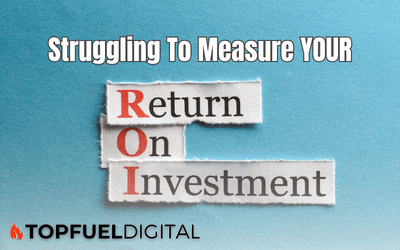In the world of business, the phrase “What gets measured gets managed” couldn’t be truer, especially when it comes to marketing. Many business owners invest heavily in marketing but struggle to gauge the actual return on their investment (ROI). This challenge can lead to misallocated resources, ineffective strategies, and a cloud of uncertainty around future marketing decisions. If you’re facing this common hurdle, you’re not alone. Let’s explore some practical steps to overcome the challenges of measuring marketing ROI and how you can start optimizing your marketing spend today.
Understanding ROI in Marketing
ROI in marketing measures the profitability of your investments in promotional activities. It compares the cost of your marketing campaigns to the revenue these campaigns generate. However, the path to clear, actionable insights isn’t always straightforward due to factors like multi-channel strategies, customer journey complexities, and varying goal definitions.
Common Challenges
1. Complex Customer Journeys: Today’s customer journeys span multiple touchpoints and platforms. A customer might see your ad on social media, read your emails, and finally make a purchase after attending a webinar. Assigning value to each touchpoint can be perplexing.
2. Long Sales Cycles: For businesses, especially in B2B sectors, sales cycles can extend over months or even years. This delay complicates the direct correlation of specific marketing efforts to sales outcomes.
3. Varying KPIs: Different campaigns may have different objectives—awareness, engagement, conversion, retention—which necessitates diverse metrics. Not every campaign directly results in a sale but may contribute to the sales funnel.
Strategies to Improve ROI Measurement
1. Define Clear Goals and Performance Metrics
Start by defining what success looks like for each campaign. Is it lead generation, brand awareness, customer retention, or direct sales? Once defined, select metrics that align closely with these goals. For instance, for lead generation, you might track lead quantity, lead quality, or cost per lead.
2. Use the Right Tools
Invest in analytics tools that can track and measure performance across different channels. Platforms like Google Analytics, CRM software, and marketing automation tools can provide invaluable insights into how users interact with your campaigns.
3. Implement UTM Parameters
Use UTM parameters to track the effectiveness of each marketing channel. By tagging your URLs with UTMs, you can see precisely how visitors interact with your site and what actions they take after clicking a specific link.
4. Embrace Attribution Models
Adopt an attribution model that suits your business model. Whether it’s first-touch, last-touch, or multi-touch attribution, understanding how each model works will help you assign credit to various marketing efforts more accurately.
5. Regularly Review and Optimize
Make ROI measurement an ongoing process. Regularly review campaign performance, learn from the insights, and tweak your strategies accordingly. What works today may not work tomorrow, so stay agile and adaptable.
Case Study: ROI Turnaround
Consider a case where a local plumbing company revamped its marketing strategy by implementing these steps. Initially, the plumber struggled with untracked ad spend and unclear campaign objectives. By defining specific KPIs for each campaign, employing advanced analytics tools, and using multi-touch attribution, they realized a significant increase in marketing ROI within a few months.
Measuring ROI in marketing doesn’t have to be a struggle. By setting clear goals, utilizing the right tools, and continuously optimizing based on performance data, you can gain clear insights into what’s working and what’s not. This will not only improve your marketing effectiveness but also ensure that every dollar spent is an investment towards growing your business.
For business owners looking to refine their marketing strategies and truly understand their ROI, the journey starts with embracing a data-driven approach. Let’s turn your marketing uncertainties into verified successes.





